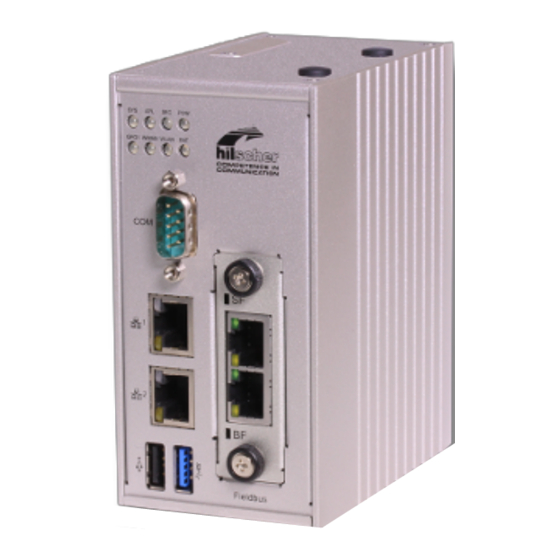
hilscher NIOT-E-TIB100-GB-RE Manuals
Manuals and User Guides for hilscher NIOT-E-TIB100-GB-RE. We have 2 hilscher NIOT-E-TIB100-GB-RE manuals available for free PDF download: User Manual
hilscher NIOT-E-TIB100-GB-RE User Manual (263 pages)
netIOT Edge Gateway
Table of Contents
-
-
5 Leds
15 -
-
-
-
-
Menu Deploy89
-
Dashboard91
-
List of Nodes101
-
MQTT Input Node104
-
MQTT Output Node109
-
-
-
Overview158
-
-
-
-
User Interface175
-
Menu Commands175
-
-
Project - Save176
-
GSDML Download176
-
Help - Contents177
-
-
-
Help189
-
-
-
User Interface190
-
Menu Commands190
-
-
Project - Save191
-
EDS Download191
-
Help - Contents192
-
Help204
-
-
-
14 Edge Server
205 -
-
-
-
Use Cases228
-
-
19 Appendix
253-
Legal Notes253
-
-
List of Figures
257-
List of Tables261
-
Contacts263
-
Advertisement
hilscher NIOT-E-TIB100-GB-RE User Manual (145 pages)
Edge Gateway
Table of Contents
-
-
-
3 Licensing
24 -
4 Use Cases
28-
-
-
-
-
-
Error Handling117
-
-
Overview122
-
-
-
-
7 Appendix
136-
Legal Notes136
-
-
List of Figures
140-
List of Tables144
-
Contacts145
-

